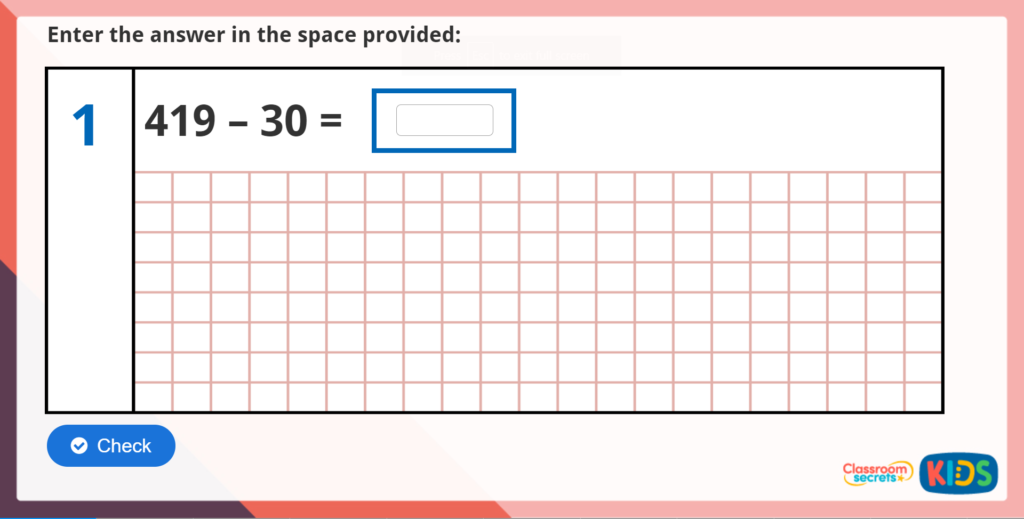Year 6 SATs Arithmetic Test Practice 28
Teacher Specific Information
This Year 6 Arithmetic Test Practice 28 activity comprises 10 questions based on the Key Stage 2 arithmetic assessments. Some questions might require the use of a pencil and some paper to carry out written calculations.
If you would like to access additional resources which link to this Arithmetic Test Practice, you can purchase a subscription for only £5.31 per month on our sister site, Classroom Secrets.
National Curriculum Objectives
Number – addition, subtraction, multiplication and division
(3C1) Add and subtract numbers mentally, including: a three-digit number and ones; a three-digit number and tens; and a three-digit number and hundred
(3C7) Write and calculate mathematical statements for multiplication and division using the multiplication tables that pupils know, including for two-digit numbers times one-digit numbers, using mental and progressing to formal written methods
(4C2) Add and subtract numbers with up to 4 digits using the formal written methods of columnar addition and subtraction where appropriate
(5C6b) Multiply and divide whole numbers and those involving decimals by 10, 100 and 1,000
(5C7b) Divide numbers up to 4 digits by a one-digit number using the formal written method of short division and interpret remainders appropriately for the context
(6C7b) Divide numbers up to 4 digits by a two-digit whole number using the formal written method of long division, and interpret remainders as whole number remainders, fractions, or by rounding, as appropriate for the context
Number – fractions (including decimals and percentages)
(5F8) Read, write, order and compare numbers with up to three decimal places
(6F4) Add and subtract fractions with different denominators and mixed numbers, using the concept of equivalent fractions
(6F9a) Identify the value of each digit to three decimal places and multiply and divide numbers by 10, 100 and 1,000 giving answers up to three decimal places
Ratio and Proportion
(6R2) Solve problems involving the calculation of percentages [e.g. of measures such as 15% of 360] and the use of percentages for comparison








